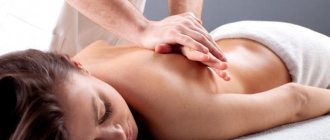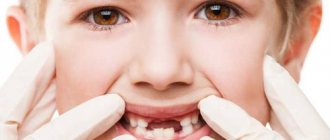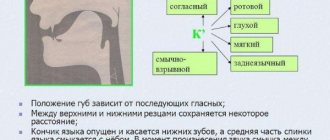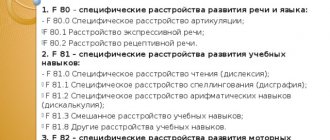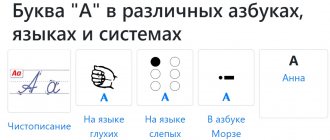Goals of speech therapy tongue massage
This procedure performs the following tasks.
- ✪ Stimulation of speech in case of delayed intellectual development of a child.
- ✪ Reducing increased salivation.
- ✪ Reducing the increased tone of the muscles that are involved in articulation.
- ✪ Activation of muscle tissue that has insufficient contractility.
- ✪ Improved kinesthetic sensations.
- ✪ Creation of suitable conditions for the development of voluntary movements of the articulation apparatus.
- ✪ Improving the elasticity of muscle fibers.
Speech therapy tongue massage for children is effective even with severe speech disorders. With its help, you can correct the pronunciation of sounds, improve sound clarity, and normalize the tone of the muscles responsible for the speech apparatus. Even if the patient has pronounced neurological symptoms, the use of competent massage can give good results.
Technique
Massaging usually begins with the face, this way the general tension of the body is relieved. They begin to stroke the forehead, slowly moving down to the chin. Move your fingers gently, horizontally from the central part of the face to the edges: from the center of the forehead to the temples, from the eyebrows to the top of the ears, from the eyelids to the auricles, from the cheekbones to the earlobes. Repeat 2-3 times.
Next, move on to the main massage complex. Below are step-by-step procedures for each part of the articulatory apparatus.
Speech therapy tongue massage
Movements are performed from the edge of the organ to the root part.
- They wrap their fingers around the tip, move it up and down, left and right, push it inwards and pull it out of the mouth.
- Supporting the organ from below, stroke it with your thumb from the center to the edges and in a circular motion.
- They clasp the organ with the thumb and forefinger and stroke its upper and lower surfaces.
- Perform vibration movements: rock the organ, lightly tap it with a finger.
- Massage the frenulum by moving your finger up and down.
- Smooth the surface of the organ with a cloth having a different texture.
- Using a toothbrush with soft bristles, different letters are drawn on the mucous surface.
If the patient has increased salivation, then place a clean paper napkin under the tongue and change it after it gets wet.
Lip massage
These procedures also include massaging the nasolabial areas and chin.
Speech therapy massage should bring only positive emotions to the baby
- He rubs his lips with his fingers.
- Making circular movements with your finger, move from the right corner of the mouth to the left and back.
- The upper lip is massaged to the right, the lower lip to the left, then the direction of movement is changed.
- They sting the lips and skin around the mouth.
- They put pressure on the lips.
- They make gentle blows with their fingers.
Hand massage
Massage the fingers and palm separately. Each finger is worked from the outer phalanx to the base. The first one is the little finger.
- Press on the pads with increasing pressure.
- They work on the palm using the rhyme “The Magpie is White-sided.”
- Draw a spiral on your palm with your finger.
- A spiked rubber su-jok ball is passed over the palm of the hand.
- Dip your fingers into a container with different grains.
Conditions for speech therapy tongue massage
The doctor's office should be warm and comfortable enough. The specialist’s hands must be warm and immaculately clean, and his nails must be cut short. The optimal time for massage is two hours after eating. Before the procedure, the child’s mouth must be thoroughly cleaned.
The approximate number of sessions is 20. The exact number is determined by the speech therapist, depending on the severity of the speech defect. To achieve maximum effect, the procedure is carried out every day. The duration of the session varies from 5 to 25 minutes, depending on the severity of the disorder.
Before starting the session, it is important for the patient to take the correct and most comfortable position. Here are the most optimal positions for the procedure.
- ✪ The child lies on his back, a special cushion or small pillow is placed under his neck. In this case, the head should be fixed and slightly tilted back.
- ✪ There is another option - the child simply sits in a chair that has a high headrest (this is a great way for those children who feel nervous when asked to lie down on the couch).
- ✪ During speech therapy massage, small children can be in a stroller in a half-sitting position, while their head should also be slightly tilted back.
- ✪ If a child is very afraid of various medical procedures, you can sit him on the parent’s lap.
During the massage, the patient must be in a calm state; pain and discomfort are not allowed. If a small patient is not in the mood for the procedure, in the first session you can limit yourself to light massaging movements in the facial area. It is acceptable to conduct sessions in the presence of parents if the child feels more relaxed when loved ones are nearby.
Immediately after the procedure, it is recommended to provide the child with complete rest for 15-20 minutes, after which he can go home and go about his daily activities. It is worth noting that even with the help of the most professional massage you cannot achieve an instant effect: the first results can only be noticed after a few weeks.
Indications
Massage helps to cope with many problems of pronunciation formation
Feedback from many parents confirms that speech therapy massage for children at home is highly effective and helps to cope with many problems of pronunciation formation. Procedures are prescribed in the presence of specific pathologies:
- voice disorders that have a physiological or psychological origin (weakening of the voice, sore throat, rapid fatigue when speaking, discomfort during pronunciation, lump in the throat);
- dysarthria – pronunciation problems due to neurological pathologies;
- stuttering is a violation of sound pronunciation, in which certain sounds, syllables, or words are drawn out or repeated at a rapid pace;
- drooling;
- weak or high tone of articulatory muscles.
Massage procedures are also carried out to speed up the results of the speech therapist’s work, when a small patient should soon go to school, and the parents turned to a specialist for help late.
Actions for increased and decreased muscle tone
Speech therapy massage for low muscle tone begins with light massaging movements of the shoulder girdle. After this, the specialist touches those articulatory areas that are least active in the child. For example, movement disorders can occur when the chewing muscles or cheekbone muscles are underdeveloped. In this case, this area needs to be particularly actively affected.
The force of pressure should increase gradually, with each session, and the pressure, despite its intensity, should not cause pain in the patient.
For hypertension, a massage with a relaxing effect is prescribed. All movements are made in the direction from the periphery to the central part, and the pressure force should be small, otherwise the condition of the articulatory apparatus may deteriorate. The movements should be sliding and slightly pressing. Each movement should be repeated approximately 8 times. The pace of the massage is slow (it is the slow pace that reduces the degree of tissue excitability). Simultaneously with the impact on muscle tissue, the specialist asks the child to perform passive head movements. This means that the patient must slowly turn their head clockwise and then counterclockwise. Thanks to this technique, it is possible to relax the neck muscles, which helps reduce the increased tone of the tongue.
During various techniques, not only massage of the tongue muscles is performed. The doctor makes stroking movements (longitudinal and transverse) in the area of the forehead and bridge of the nose, presses on the hair growth area, and makes tapping movements in the area of the lip muscles to completely relax them.
Please note: some children are diagnosed with increased and decreased tone of various muscles. In this case, a differentiated massage is carried out: the specialist acts on some parts more actively, while others massage with relaxing movements. This approach requires high qualifications and a lot of practice.
Oral massage for impaired sucking and swallowing in newborns
Incorrect latching on the breast by a baby during breastfeeding and swallowing disorders in infants can lead to the baby's refusal to eat, stagnation of food in the throat, constant regurgitation, and poor weight gain. A speech therapist, using speech therapy orofacial massage techniques (massage of the mouth, lips, cheeks), can help in this case.
By examining the baby's oral cavity with a gloved finger, a specialist can evaluate the functions of sucking, retraction, tongue position, and positioning of the larynx during feeding. Corrective speech therapy massage sessions for infants are carried out before feeding so that the child does not get tired and last only 2-5 minutes. The massage can be combined with the “finger feeding” procedure, when breast milk flows from a bottle through a tube to the finger that the baby sucks.
Contraindications to speech therapy massage
There are some restrictions to carrying out such a procedure. Thus, massage is not prescribed for the following conditions:
- ✪ ARVI and other viral infections;
- ✪ herpetic rashes on the face and lips;
- ✪ inflammatory eye diseases;
- ✪ inflammatory processes in the oral cavity;
- ✪ increased body temperature (in this case, the procedure is postponed until complete recovery).
Massage should be prescribed with caution to children who suffer from convulsive syndrome. If the child behaves restlessly during the procedure, shows fear and aggression, the massage should be stopped and try to calm the patient. For severe anxiety, mild sedatives may be prescribed.
Massage with a toothbrush
Such procedures are carried out in case of weakening or loss of voice, drooling, or stuttering. They help strengthen articulatory muscles and eliminate speech disorders.
Massage procedures are best done before meals.
The initial speech therapy massage for children at home with a toothbrush lasts 5 minutes, for infants - 2. The time of the procedures is gradually increased, after a week the session should already take about 20 minutes. The procedure is completed earlier if discomfort occurs in the oral cavity.
Take a hygienic device with soft bristles. Place gauze or a paper napkin under the tongue to absorb saliva. Make circular and longitudinal movements without pressing on the mucous surface of the organ.
It is important not only to carry out, but also to complete massage procedures correctly. After classes, the little patient is praised for his patient and obedient behavior. This way he won’t have any whims before the next procedures.
Contraindications for logomassage:
- acute inflammatory processes;
- infectious, fungal skin diseases;
- fungal or allergic skin diseases;
- lesions of the oral mucosa;
- herpes rash on the lips;
- furunculosis;
- conjunctivitis;
- diseases of the oral cavity: gingivitis, stomatitis;
- nosebleeds;
- various forms of allergic reactions: diathesis, urticaria and others;
- Quincke's edema;
- enlarged lymph nodes;
- epilepsy;
- oncology.
I hope the article was useful.
General overview
The masticatory muscles are located on the lateral areas of the skull, and are located in pairs, four on each side. The masseter muscle itself, as well as the temporal muscle, are characterized by a superficial location, while the pterygoid muscles (medial and lateral) are located in the infratemporal cavity. Starting on the cranial bones, they connect to the mandibular region, and set the jaw in motion by contracting and relaxing.
The functionality of the anatomical elements under consideration is difficult to overestimate, since they are involved not only in the processes of food processing, but also in breathing, as well as in the implementation of speech function. Massage of the masticatory muscles for TMJ dysfunction allows you to relieve overstrain, relieve pain and restore jaw mobility.
